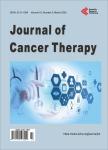Head and Neck Cancer: Closer Look at Patients Quality of Life
Head and Neck Cancer: Closer Look at Patients Quality of Life作者机构:Department of Radiotherapy National Cancer Institute Cairo University Cairo Egypt
出 版 物:《Journal of Cancer Therapy》 (癌症治疗(英文))
年 卷 期:2016年第7卷第2期
页 面:121-128页
学科分类:1002[医学-临床医学] 100214[医学-肿瘤学] 10[医学]
主 题:Head and Neck Cancer Radiotherapy Chemo-Radiation Quality of Life
摘 要:Head and neck cancer (HNC) as a disease and its treatment have a disproportionate impact on all aspects of patients’ quality of life (QOL). QOL is a multidimensional construct of an individual’s subjective assessment of the impact of an illness or treatment on his/her physical, psychological, social and somatic functioning and general well-being [1]. Thus, QOL has become an important treatment outcome in HNC [2]. Objective: It is to evaluate the quality of life of patients dealing with squamous cell carcinoma of the head and neck treated in the radiotherapy department, National Cancer Institute, Cairo University. Material and methods: Starting from March 2012 to December 2013, 87 patients with histopathologically proven Head and Neck Squamous Cell Carcinoma (HNSCC) were taking part in our prospective study. The patients’ QOL answers to the questionnaire were collected for both the EORTC QLQ-C30 and the EORTC Head and Neck questionnaires (QLQ-H&N35) and then all points were transformed to a 0 - 100 scale according to the guidelines of the EORTC. Certain clinical factors were chosen to evaluate their effect on the QOL;site of primary tumor, clinical stage, and mode of therapy applied: radiotherapy versus chemo-radiotherapy (CRT). Moreover, age, gender and smoking were studied. Results: Majority of the items assessed in the QLQ-C30 and QLQ-H&N35 questionnaire showed that they were negatively impacted at the end of treatment. As for the factors that had a negative effect on the QOL, they comprised;female gender (p 0.05), age 60 years (p 0.05), smoking (p 0.01), clinical stage III and IV (p 0.05), larynx and hypopharynx as a site of primary (p 0.01), and CRT (p 0.01). Conclusions: Results of our study showed that treatment options had a significant negative effect on the QOL by the end of the treatment course. Moreover, our results showed that age, gender, smoking habit, tumor site, and clinical stage of disease had a significant impact on the QOL of HNSCC



